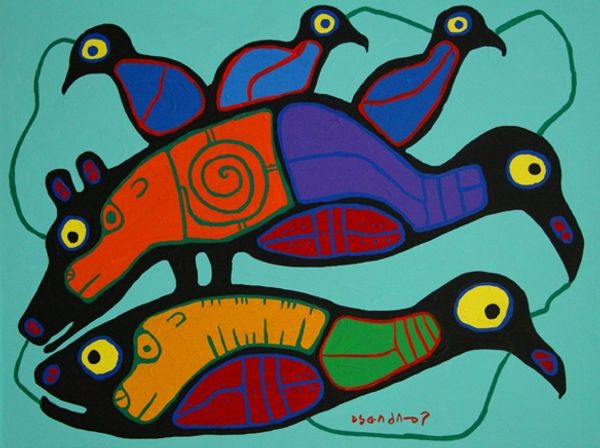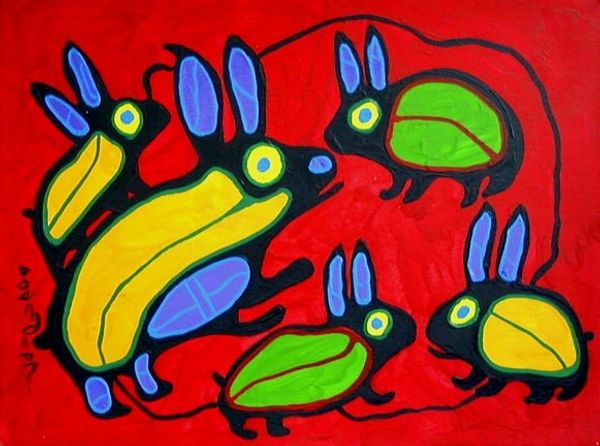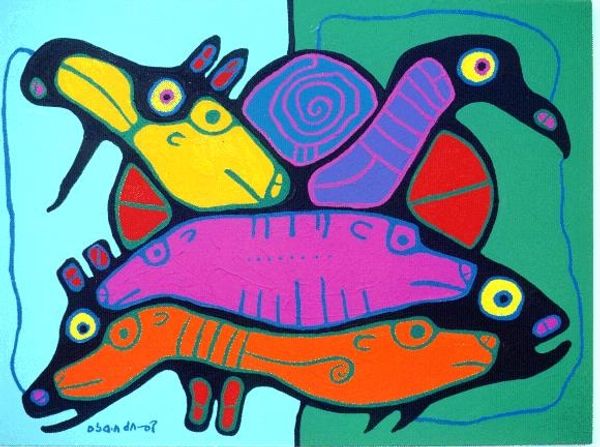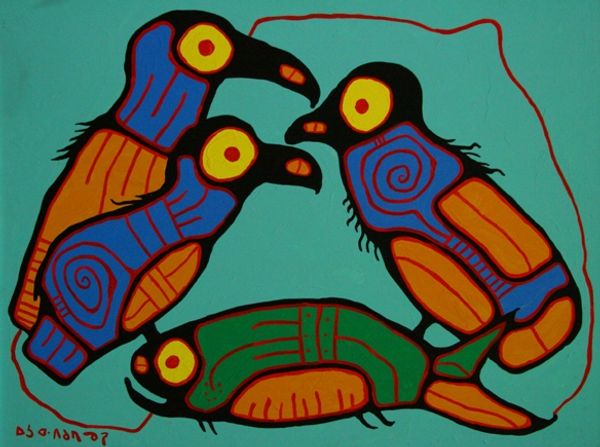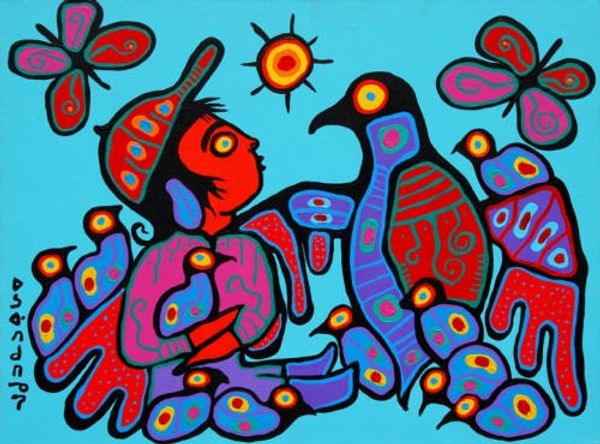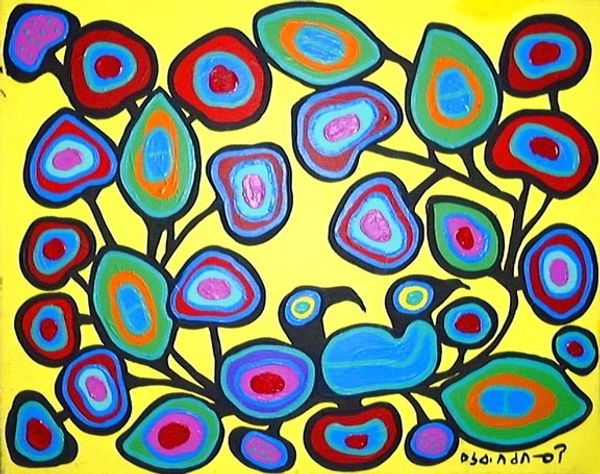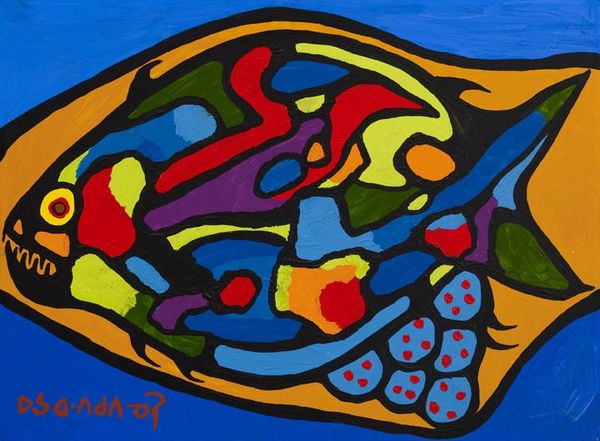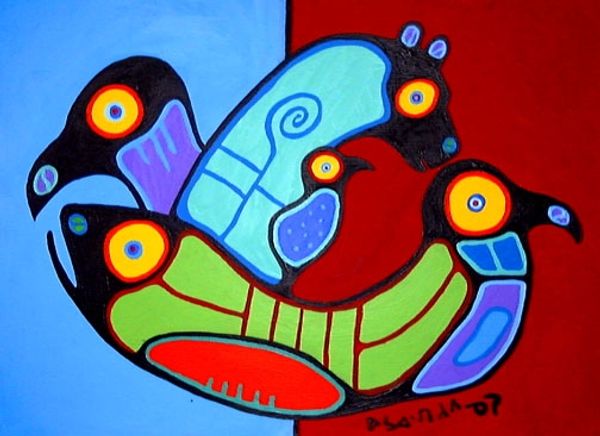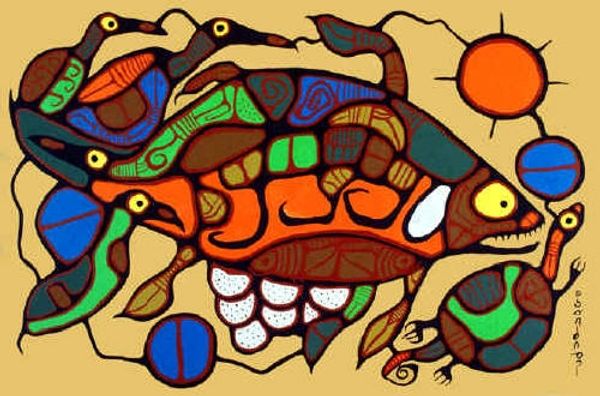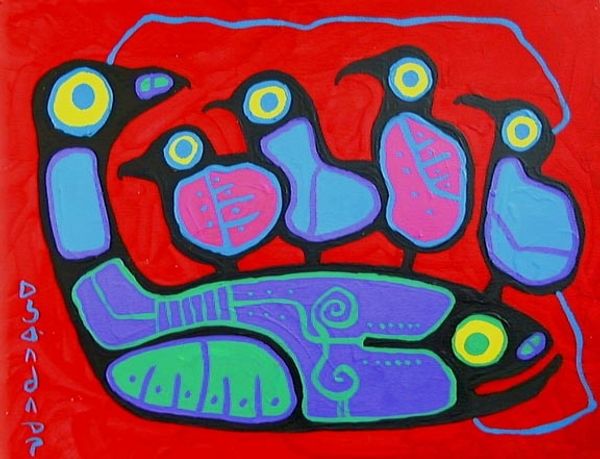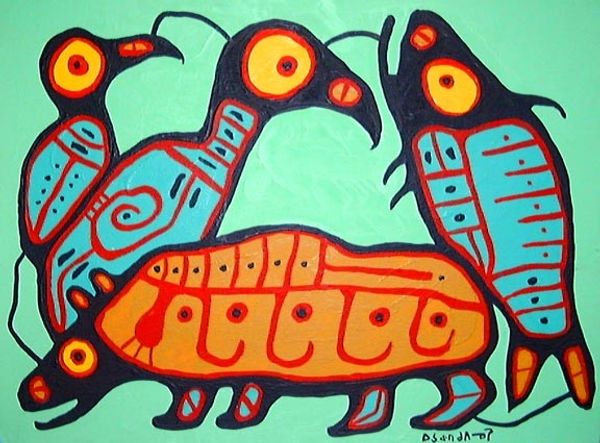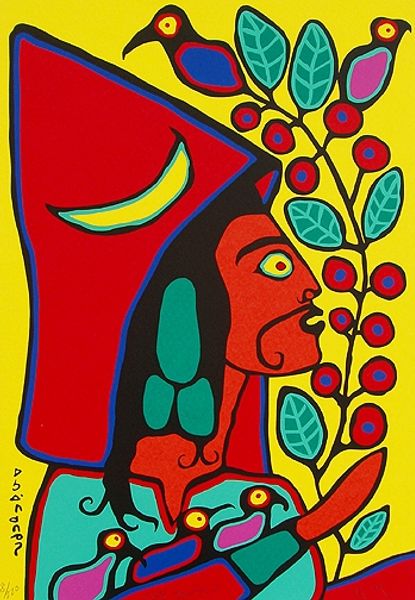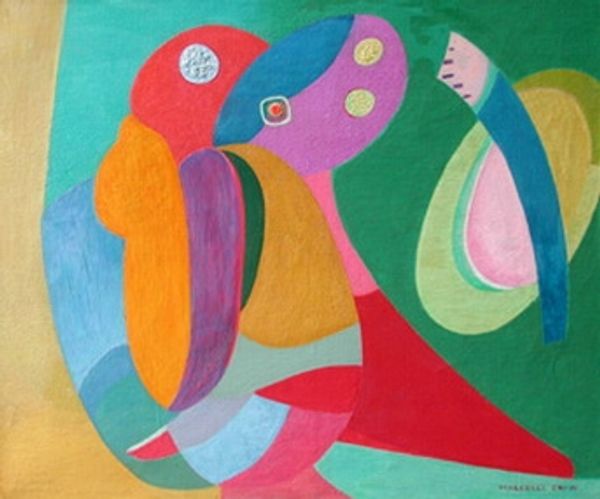
painting, acrylic-paint
#
painting
#
pop art
#
acrylic-paint
#
figuration
#
naive art
#
indigenous-americas
Copyright: Estate of Norval Morrisseau
Curator: Today we’re looking at a piece titled “Nature’s Guide” by Norval Morrisseau, painted using acrylic. Editor: Well, it certainly pops. The composition feels both dense and airy with those stylized, interconnected shapes floating against the vibrant orange ground. There’s a tension between the flatness of the color fields and the suggestion of organic form. Curator: Indeed. Morrisseau, as a key figure in the Woodland School, powerfully merged Anishinaabe traditions with contemporary art practices. Consider how this painting intertwines vibrant colors with X-ray style figuration characteristic of his work, giving visibility to inner spirit. We are looking at an interpretation that portrays a spiritual dimension using abstracted figures, notably these water birds. Editor: Those black outlines are doing a lot of work. They create definition, but they also flatten the picture plane. The palette itself—the reds, blues, greens—is deceptively simple. They evoke a specific, almost retro, sense of color harmony, don't you think? The rounded, amoeba-like sections lend a playfulness, belying a potentially deeper narrative. Curator: Absolutely. This seemingly simplistic palette references complex cultural and personal narratives, challenging the Western art world's expectations by centering Indigenous cosmology. We could even consider how the interwoven forms represent relationships, kinship, and ecological harmony. Morrisseau's work serves to decolonize artistic spaces, reclaim cultural identity and advocate for Indigenous sovereignty. Editor: I can see how that focus challenges traditional western conventions, but aesthetically it creates an interesting paradox of form and intent. Curator: Morrisseau has gifted us with a vocabulary to voice the spirit and experiences central to Indigenous identity and rights. The narrative potential in this artwork moves us to acknowledge these stories in a colonial context that all too often represses Indigenous people. Editor: A wonderful opportunity for art to bridge theory and the intrinsic aesthetic. Curator: I agree! It has certainly made me consider different aspects, particularly concerning my understanding and contextualization.
Comments
No comments
Be the first to comment and join the conversation on the ultimate creative platform.
